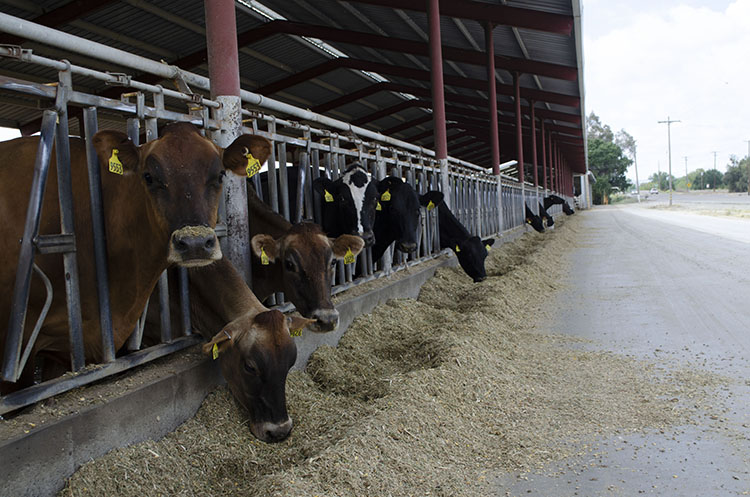
This week is forecasted to be hot in nearly every dairy producing part of the country. Month-long predictions have much of the same with above average temperatures expected for all of July. Further, meteorologists are also anticipating drought concerns in the Midwest.
With that in mind, we return to the all-important conversation of how can we keep our cows cool and comfortable? Of course, good ventilation, shade, and other forms of cooling make environments much more comfortable for cows. Hopefully, farms have performed the needed maintenance on their heat stress relief systems, and they are prepared for the coming heat.
There’s more that can be done
Many farms also adapt their feeding programs to help cows manage heat and continue producing high levels of milk and components. During a virtual presentation for the Four State Dairy Nutrition and Management Conference, the University of Illinois’ Phil Cardoso focused on strategies his team has explored to modify diets in order to help cows better manage the heat.
“When we feed for those amino acids that are limited, we already knew the impact on dry matter intake, milk yield, and milk components,” the dairy specialist commented. “Now we are realizing all the other effects that are really impacted by stressful events like heat stress. We can alleviate that by feeding the cow at her requirement in terms of methionine and lysine.”
Specifically, Cardoso reviewed a study from his research team that induced heat stress in cows to determine the effect of supplementing methionine. One group was fed rumen-protected methionine at a rate of .105% of dry matter intake while the other was not supplemented. The first group had a lysine to methionine ratio of 2.73 while the control group had a ratio of 3.47.
Additionally, each heat stressed cow was paired with a cow that was not heat stressed. That paired animal was fed the same dry matter intake as the heat stressed cow so it was limit fed during the study.
With those parameters in mind, Cardoso’s team found that cows induced with heat stress had greater vaginal and rectal temperatures than their counterparts on the same diet. They also had higher respiration and heart rates. This would well align with other studies.
Interestingly, the feed restricted cows performed less well in milk yield and milk protein metrics. Cardoso hypothesized that the heat stressed cows would produce less milk and protein if the period was extended beyond the 9 days of the data collection period. In the cows that were heat stressed, feeding rumen-protected methionine raised milk fat percentages compared to heat stressed cows fed a controlled diet. No matter which diet they were fed, heat stress reduced de novo fatty acid levels.
“Rumen-protected methionine did not alter physiological aspects but had a positive impact on that lactation with milk protein and fat,” Cardoso concluded.
While it may be too late to provide your herd with some heat stress abatement tools, a shift in diet may help cows better manage the hot days. Visit with your nutritionist about how you can alter diets to meet your cows’ needs.

The author is an associate editor. She covers feeding and nutrition, youth activities, and heads up the World Dairy Expo Supplement. Maggie was raised on a 150-cow dairy near Valley Center, Kansas, and graduated from Kansas State University with degrees in agricultural communications and animal sciences.







